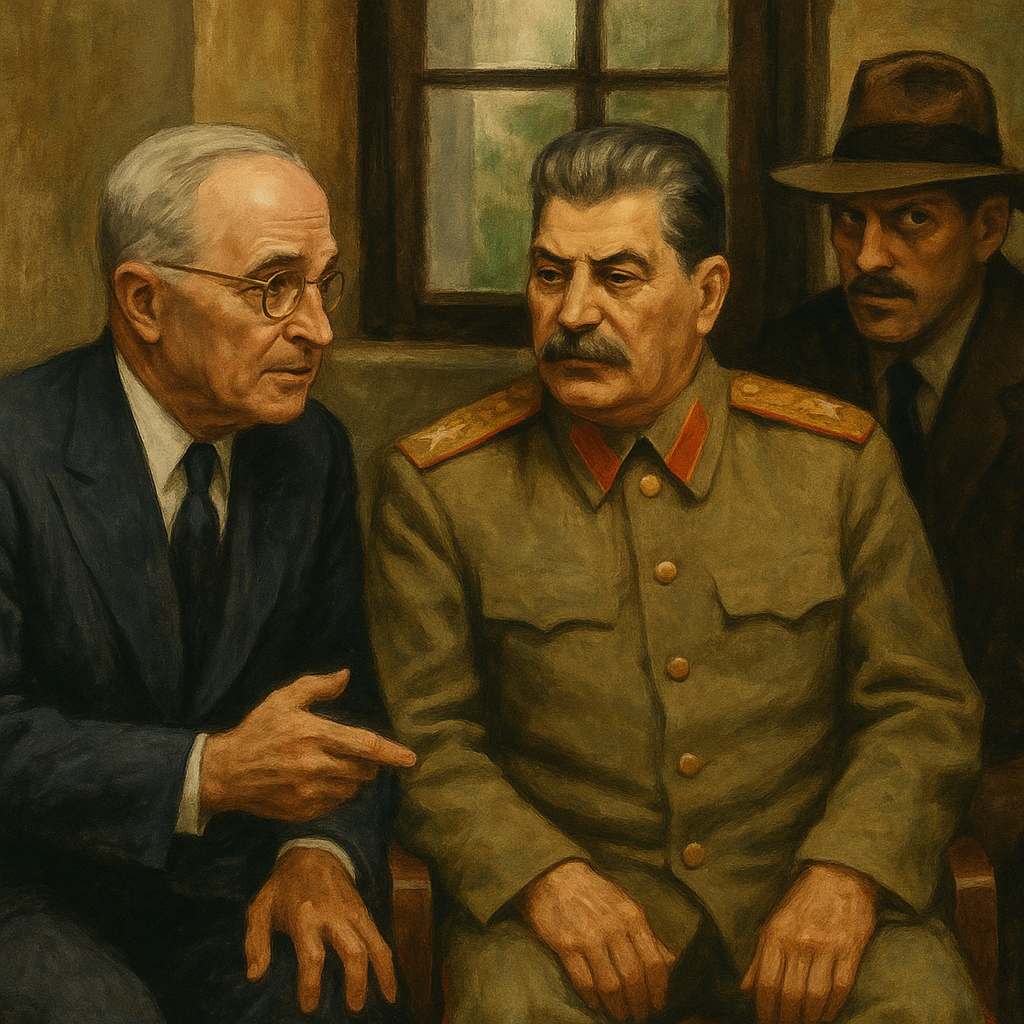Lesson 1: The Cold War Begins (The Cold War Years)
🤝 Allies Become Enemies
In World War II, the United States and the Soviet Union fought on the same side. But after the war ended in 1945, they began to distrust each other. They had different ideas about how countries should be run.
At the Yalta Conference and Potsdam Conference, leaders like Roosevelt, Churchill, Stalin, and Truman met to plan the world after the war. They agreed on some things, but argued about others.
The U.S. wanted free elections and democracy in Europe.
The Soviet Union wanted to keep control of Eastern Europe and build a communist system.
🕵️ Story: At the Potsdam meeting, U.S. President Truman told Stalin that the U.S. had a new powerful weapon—the atomic bomb. Stalin said little, but he already knew. His spies had told him! This made trust even worse.
🧱 Building an Iron Curtain
Winston Churchill gave a famous speech in 1946. He said,
“An Iron Curtain has fallen across Europe.”
This “curtain” was not real, but it showed the divide between free Western Europe and communist Eastern Europe, controlled by the Soviet Union. People in the East couldn’t leave easily. Many families were separated.
🧳 Story: A man in Berlin built a secret tunnel under the wall to help his sister escape to the West. He risked his life to bring her to freedom.
🛑 Efforts to Halt Communist Expansion
The U.S. wanted to stop the spread of communism.
✋ The Truman Doctrine
In 1947, President Harry Truman said the U.S. would help countries fight against communism. He sent money and aid to Greece and Turkey.
💵 The Marshall Plan
Europe was poor after the war. So, the U.S. gave over $12 billion to help rebuild. This was called the Marshall Plan. The U.S. hoped people would choose freedom instead of communism.
🍞 Story: In one town in France, people wrote “Thank you, America!” on the side of bread trucks that brought Marshall Plan food.
🔥 Cold War Heats Up
✈️ The Berlin Airlift
In 1948, the Soviet Union blocked roads to West Berlin, trying to force the city to surrender. But the U.S. and Britain sent planes with food, coal, and medicine every day for almost a year.
🧁 Story: U.S. pilot Gail Halvorsen dropped candy from his plane using little parachutes. Children called him “The Candy Bomber.” He became a hero in Germany.
🤝 NATO and the Warsaw Pact
In 1949, the U.S. and Western countries formed NATO—a team of allies to protect each other.
In 1955, the Soviet Union answered with the Warsaw Pact, a team of communist countries.
💣 The Arms Race
Both sides built more and more nuclear weapons. People were afraid of World War III. Schools in the U.S. even practiced “duck and cover” drills in case of a bomb.
🚀 The Space Race
In 1957, the Soviet Union launched the first satellite, Sputnik. The U.S. was shocked! Soon, both countries were racing to explore space. In 1969, the U.S. put a man on the moon.
🚀 Story: When Americans watched Neil Armstrong step on the moon, many looked up at the sky and cheered, “We did it!”
